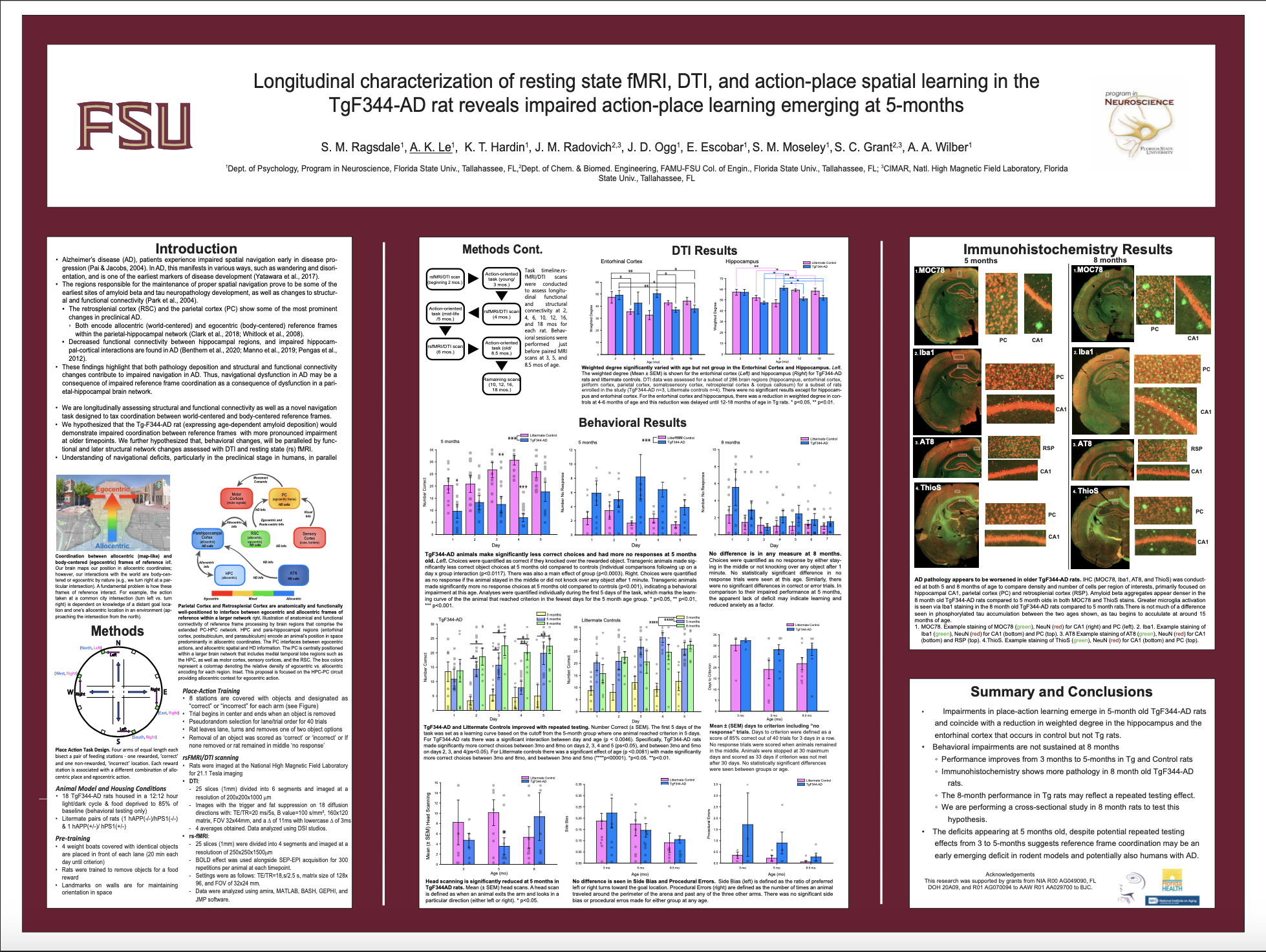Research Symposium
25th annual Undergraduate Research Symposium, April 1, 2025
Amy Le Poster Session 1: 9:30 am - 10:30 am/ Poster #189

BIO
My name is Amy Le and I am a pre-medical student majoring in Behavioral Neuroscience, with minors in Chemistry and Business. My interest for research resides in memory impairment and neurobiological degeneration, which show prevalence in the geriatric population. In addition to research, I work as a medical assistant in the endocrinology and rheumatology departments, and as a learning assistant for the biochemistry course. Upon graduation, I hope to matriculate in medical school and continuing my passion for medicine and research.
Longitudinal Characterization of Resting State fMRI, DTI, and Action-place Spatial Learning in the TgF344-AD rat Reveals Impaired Action-place Learning Emerging at 5-months
Authors: Amy Le, Dr. Aaron WilberStudent Major: Behavioral Neuroscience
Mentor: Dr. Aaron Wilber
Mentor's Department: Department of Psychology and Neuroscience Mentor's College: College of Arts and Sciences Co-Presenters:
Abstract
A hallmark of preclinical Alzheimer’s Disease (AD) is spatial disorientation. One potential cause is disrupted exchange between egocentric and allocentric reference frames. Both the parietal (PC) and retrosplenial cortex (RSC) are known for roles in encoding and transforming information between these reference frames. We hypothesized that pathology development in TgF344-AD rats lead to brain network dysfunction, which causes impaired allocentric and egocentric coordination. In TgF344-AD rats and littermate controls, reference frame coordination was assessed at 3, 5, & 8.5 months with an action-oriented spatial navigation task. Rats were required to associate actions (e.g., left turn) with locations. Days to criterion, number correct, incorrect and no response, side bias, head scanning, and procedural errors were measured. Graph theory was applied to longitudinal MRI data acquired at 2, 4, 6, 10, 12, 16 & 18 months in vivo at 21.1T to assess functional and structural connectivity alterations by rsfMRI, and structural diffusion tensor imaging (DTI), respectively. We found that at 3-months, rats in both groups could not achieve criterion and declines in action-orientation performance emerged at 5-months of age. These alterations coincided with changes in the hippocampus and the entorhinal cortex of TgF344-AD rats, with a delay in changes in weighted degree to later in life than controls. The 5 months group made fewer correct choices and had more no response trials than littermate controls. These findings highlight a new focus for understanding cognitive deficits by using allocentric and egocentric coordination as a novel predictor of early declines in Alzheimer's Disease.
Keywords: Alzheimer's, memory, spatial disorientation, neuropathology, amyloid beta, phosphorylated tau


